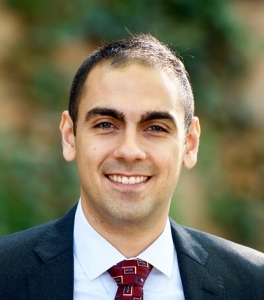Racial Bias in Policing

Professor Felipe Goncalves
In January 2017, Attorney General nominee Jeff Sessions was asked about federal oversight of policing during his confirmation hearing before the Senate. He responded, “I think there is concern that good police officers and good departments can be sued by the Department of Justice when you just have individuals within a department who have done wrong. These lawsuits undermine the respect for police officers and create an impression that the entire department is not doing their work consistent with fidelity to law and fairness.”
The debate over whether misbehavior in policing is widespread or the product of a few individuals is a crucial question for public policy. This issue is particularly important when addressing the potential presence of racial discrimination in policing. If discrimination is concentrated among a few individuals, the best policy may be a targeted intervention of training or discipline. But if discrimination is widespread, department-wide policies may be more effective.
In a study titled “A Few Bad Apples? Racial Bias in Policing,” Professor Felipe Goncalves and coauthor Steve Mello (NYU) study traffic enforcement and, in particular, the degrees to which individual police officers practice discrimination. In many states, the punishment for speeding jumps discontinuously at certain speeds. A jump may involve not only a higher fine, but also a mandated court appearance or lasting mark on the driver’s record. Officers are free to choose what speed to charge, and it is thus a common practice for officers to reduce the written speed on a driver’s ticket to right below a jump in the fine schedule. For example, in most counties in Florida, drivers are fined $135 for driving 9 MPH above the speed limit but fined $205 for driving 10 MPH or more above the speed limit. In response, an officer may give a driver a “break” by writing a ticket for 9 MPH over when the driver was stopped at more than 10 MPH over the limit.
Using data from the Florida Highway Patrol, Goncalves and Mello show that, while officers regularly give breaks for speeding drivers in order to avoid these discrete fine jumps, minority drivers are significantly less likely to receive a break than white drivers. This disparity in treatment cannot be explained by differences in underlying speeding or other driver characteristics (e.g., that minority drivers are more likely to have previous traffic tickets), indicating that, on average, officers are discriminating against minority drivers. Because each officer writes hundreds of tickets for very similar infractions, Goncalves and Mello are able to identify each individual officer’s degree of discrimination, documenting significant heterogeneity across the police force. While all demographic groups of police appear to discriminate on the basis of drivers’ race, minority officers and female officers are less discriminatory on average. Forty percent of officers exhibit some amount of discrimination.
The estimates of discrimination in this study are useful for evaluating different proposed policies for targeting discrimination. Goncalves and Mello find that policies that increase minority and female officers or fire the right tail of most discriminatory officers are unlikely to cause meaningful reductions in the overall disparity in ticketing. However, because of the significant heterogeneity in behavior across officers, changes to how officers are assigned to neighborhoods of different racial compositions can substantially mitigate the impact of discrimination. This study contributes a novel method for understanding how discrimination varies across criminal justice agents and how such discrimination determines the appropriate policy response.


